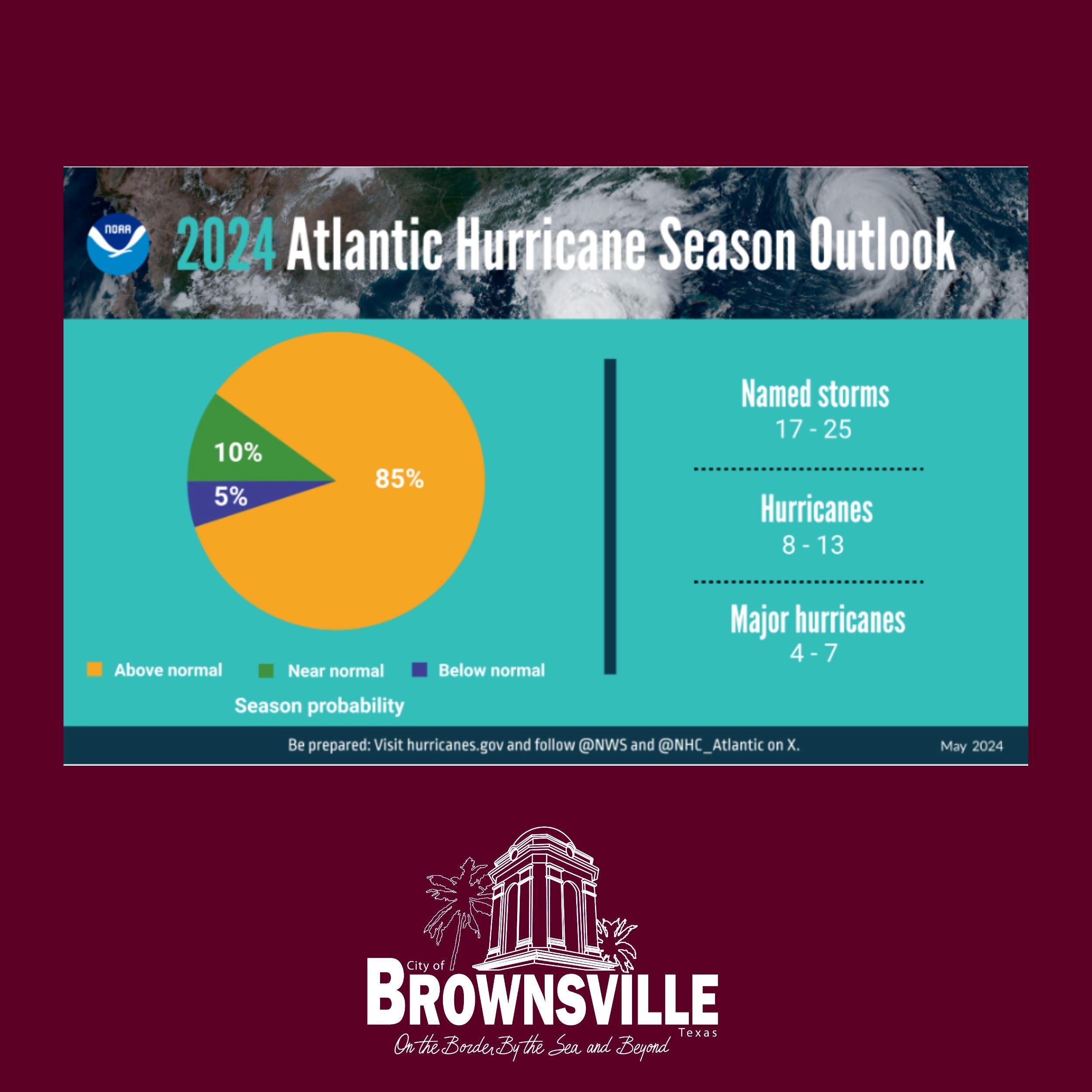- June 20, 2024
Above-Normal Active 2024 Atlantic Hurricane Season Predicted

With hurricane forecasters predicting an above-normal active 2024 Atlantic hurricane season, Rio Grande Valley residents are encouraged to begin preparations in advance of any storm entering the Gulf of Mexico.
The Atlantic hurricane season, which runs from June 1 to November 30, is expected to have an 85% chance of above-normal activity, a 10% chance of a near-normal season, and a 5% chance of below-normal activity.
NOAA’s National Weather Service Climate Prediction Center projects between 17 to 25 named storms (winds of 39 mph or higher). Of these, 8 to 13 are likely to develop into hurricanes (winds of 74 mph or higher), including 4 to 7 major hurricanes (category 3, 4, or 5 with winds of 111 mph or higher). These predictions come with a 70% confidence level.
The numbers forecast by NOAA are the highest forecast that has been predicted.
“Those numbers, I mean, that’s the highest forecast that we’ve had. So, all the ingredients are definitely in place to have an active season and, you know, it’s reason to be concerned, of course, but not alarmed. Okay. So, we need to use this time to, to our advantage to, to really be prepared for the hurricane season,” said Ken Graham, director of the National Weather Service.
Colorado State University’s Tropical Weather & Climate Research predicts there will be 23 named storms, 11 hurricanes, and 5 major hurricanes.
The first storm that develops during the 2024 Atlantic hurricane season will be named Alberto.
According to NOAA and CSU, several factors contribute to this anticipated increase in activity. Notably, near-record warm ocean temperatures in the Atlantic Ocean, the development of La Nina conditions in the Pacific, reduced Atlantic trade winds, and less wind shear all promote tropical storm formation.
NOAA scientists highlight that as one of the strongest El Ninos on record comes to an end, a swift transition to La Nina conditions is expected. La Nina reduces wind shear in the tropics, fostering hurricane development. Additionally, high oceanic heat content in the tropical Atlantic Ocean and Caribbean Sea provides substantial energy for storm formation.
This season could also see an above-normal west African monsoon, which generates African easterly waves that often seed strong and long-lasting Atlantic storms. Furthermore, lighter trade winds enhance hurricane growth by reducing the disruption from wind shear and limiting ocean cooling.
With the prediction of an active hurricane season, preparedness and awareness are essential for coastal and island communities. NOAA’s forecasts underscore the need for vigilance and robust disaster response planning as the season progresses.

